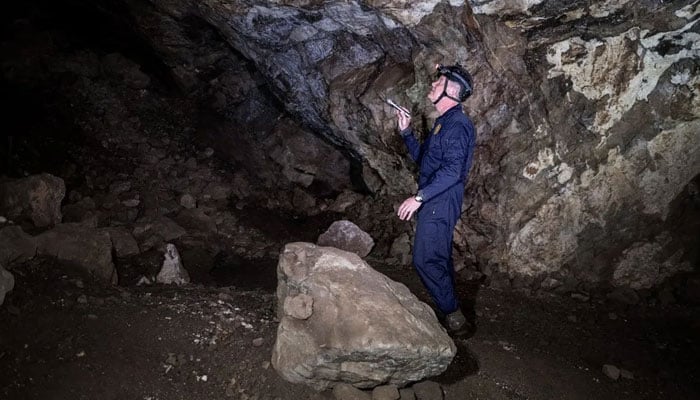Oldest burial site unearthed in South Africa rewrites human evolution timeline
The burial site is located approximately 30 meters (100 feet) below the surface
June 06, 2023

A team of Palaeontologists in South Africa, Led by renowned palaeoanthropologist Lee Berger, have found the oldest-known burial site in the world.
The team of researchers uncovered several specimens of Homo naledi, an ancient relative of humans, buried deep underground in a cave system within the Cradle of Humankind, a UNESCO world heritage site near Johannesburg.
The burial site, located approximately 30 meters (100 feet) below the surface, challenges the current understanding of human evolution. The remains of Homo sapiens, previously considered the earliest known burials, date back around 100,000 years and were found in the Middle East and Africa. However, the recently discovered burials in South Africa predate them by at least 100,000 years.
The fossils found in the South African cave system belong to Homo naledi, a primitive species that existed between apes and modern humans. These individuals had brains about the size of oranges and stood approximately 1.5 meters (five feet) tall. The discovery of Homo naledi in 2013 had already disrupted the notion of a linear evolutionary path, as their physical characteristics and tool-wielding capabilities challenged previous assumptions.
The oval-shaped burial sites, which contain at least five individuals, were intentionally dug and then filled in to cover the bodies. This finding suggests that mortuary practices were not limited to Homo sapiens or hominins with larger brain sizes. In addition to the burial sites, engravings forming geometric shapes were discovered on smoothed surfaces of a nearby cave pillar. This implies that symbolic practices may not be unique to humans and challenges the traditional belief that humans invented such behaviours.
Lee Berger emphasised that these discoveries are significant in reshaping our understanding of human evolution. He acknowledged the controversy that arose from his previous findings and stated that the current evidence contradicts the notion that brain size alone determined complex behaviour. The researchers believe that burial practices, meaning-making, and even artistic expression may have a more intricate and diverse history than previously assumed.
While the discoveries require further analysis and peer review, they have the potential to revolutionise our understanding of human evolution. Anthropologists not involved in the research expressed anticipation for the results to be vetted and acknowledged the potential importance of the findings. The findings open up new avenues for exploration and highlight the complexity of human behaviour throughout history.











